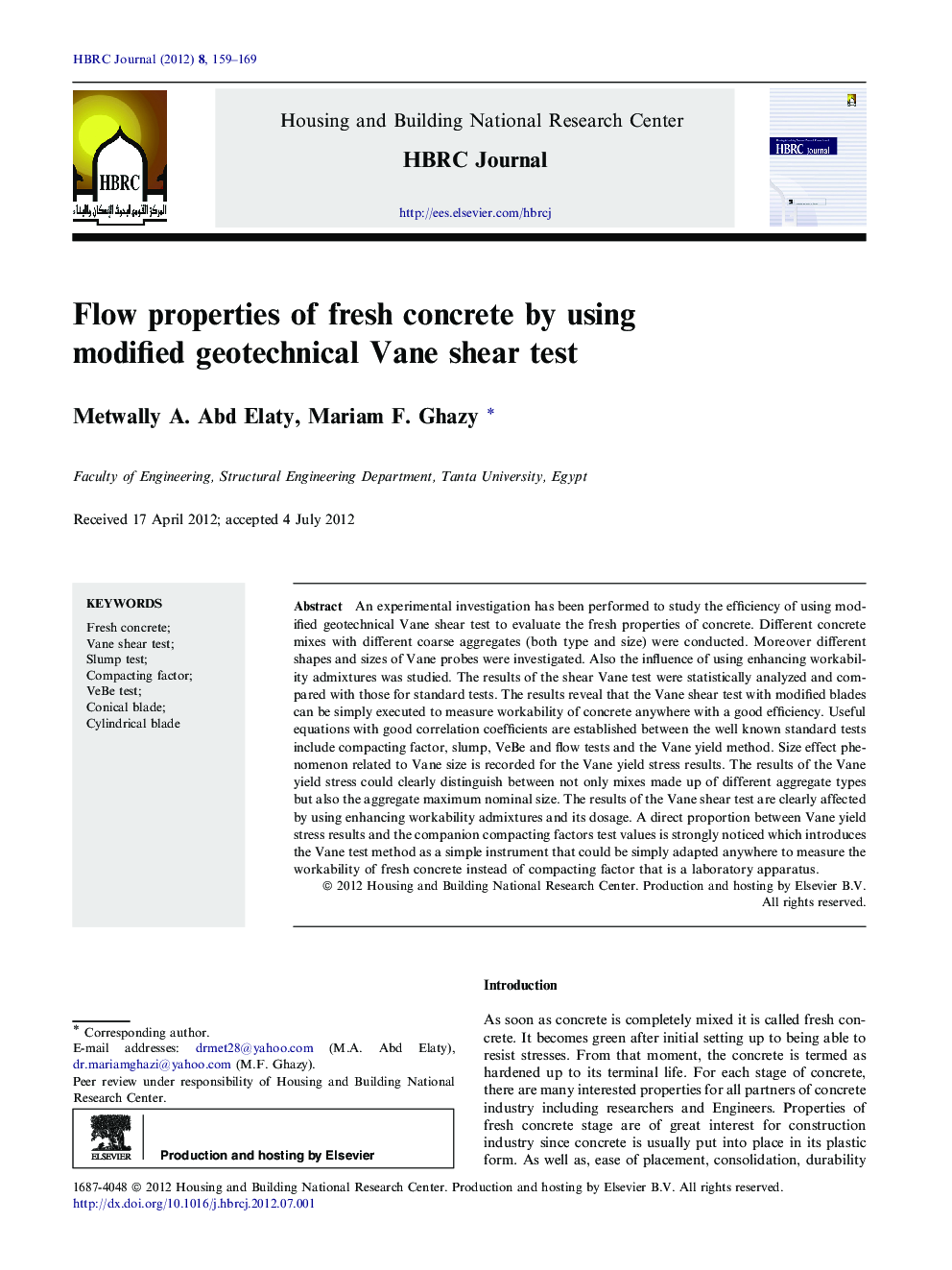| Article ID | Journal | Published Year | Pages | File Type |
|---|---|---|---|---|
| 274716 | HBRC Journal | 2012 | 11 Pages |
An experimental investigation has been performed to study the efficiency of using modified geotechnical Vane shear test to evaluate the fresh properties of concrete. Different concrete mixes with different coarse aggregates (both type and size) were conducted. Moreover different shapes and sizes of Vane probes were investigated. Also the influence of using enhancing workability admixtures was studied. The results of the shear Vane test were statistically analyzed and compared with those for standard tests. The results reveal that the Vane shear test with modified blades can be simply executed to measure workability of concrete anywhere with a good efficiency. Useful equations with good correlation coefficients are established between the well known standard tests include compacting factor, slump, VeBe and flow tests and the Vane yield method. Size effect phenomenon related to Vane size is recorded for the Vane yield stress results. The results of the Vane yield stress could clearly distinguish between not only mixes made up of different aggregate types but also the aggregate maximum nominal size. The results of the Vane shear test are clearly affected by using enhancing workability admixtures and its dosage. A direct proportion between Vane yield stress results and the companion compacting factors test values is strongly noticed which introduces the Vane test method as a simple instrument that could be simply adapted anywhere to measure the workability of fresh concrete instead of compacting factor that is a laboratory apparatus.
